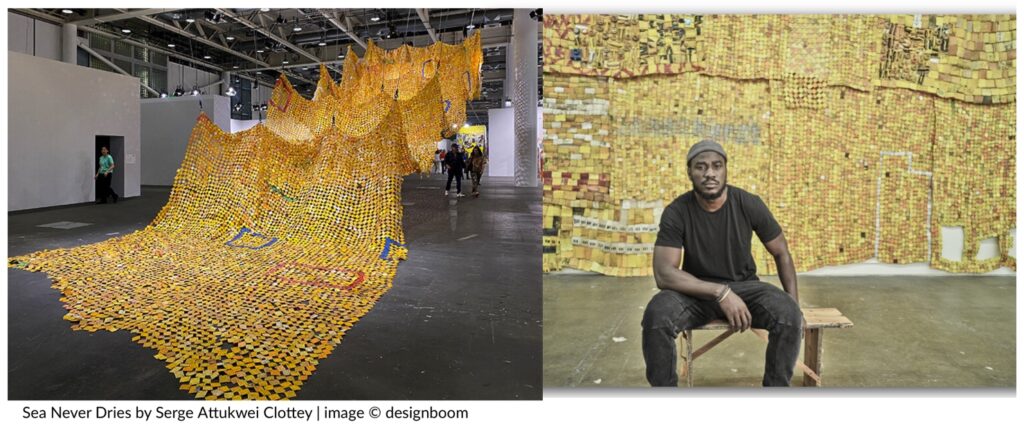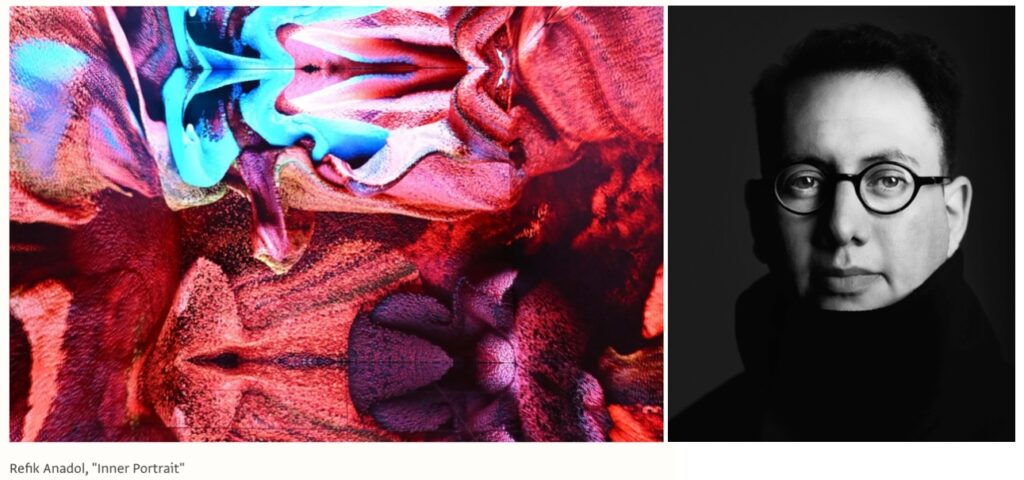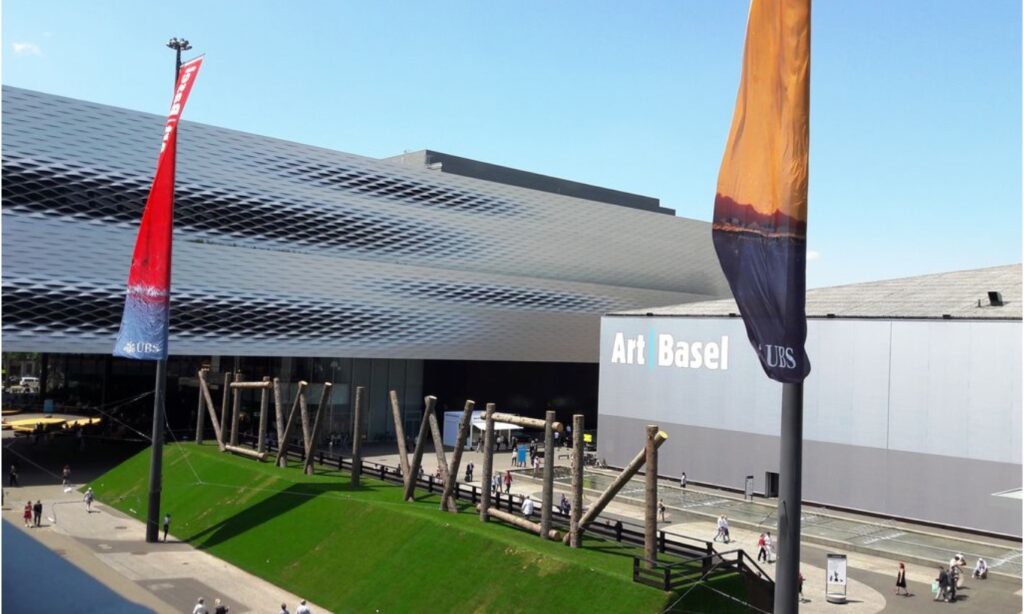By Stephanie Elsener, Masters in Art education, Boston University
One of the most striking trends is the rise of larger-than-life pieces. Art Basel’s “Unlimited 2024” concept dedicated an entire exhibition hall to large-scale installations, demonstrating that grand art pieces can make a significant impact even in smaller spaces. This trend emphasizes that the size of the artwork can lead viewers to explore it from new perspectives, creating a dynamic and engaging experience.
Another significant trend is the embrace of VR and AI art. These technologies are becoming increasingly prominent in the art world, offering new ways to create and experience art. For example, Turkish media artist Refik Anadol’s “Inner Portrait” show used AI to create an immersive experience that tracked brain signals from first-time travelers. This exhibit invited spectators to step inside an immersive cube, surrounded by AI generated interpretations of travel-inspired emotions. Such innovations highlight the potential of digital art to create emotional connections and expand the imagination.
Biophilic art is also gaining traction, with artists incorporating natural elements into their work. Agnes Denes’ “Honouring Wheatfield” installation at Art Basel featured actual wheat growing from moveable palettes, bringing a touch of nature into the urban environment. This trend reflects a growing desire to reconnect with nature, even in the midst of bustling cities. By incorporating references to nature in textures, patterns, and materials, artists can create a sense of tranquility and connection to the natural world.
Textiles are experiencing a renaissance as a serious art form. Techniques like weaving, dyeing, and felting are being used to create tactile and visually engaging pieces. Artists like Teresa Baker are using unusual and unexpected textures to communicate cultural and environmental themes. In the home, textiles can add softness, texture, and interest, making them a versatile and impactful medium. Finally, the show emphasized the importance of buying art that speaks to you personally. Art is not just an investment; it is a reflection of individual values and stories. By choosing pieces that resonate on a personal level, collectors can create a meaningful and engaging narrative within their homes. This trend celebrates the diversity of artists and the unique perspectives they bring to their work.
In conclusion, the art trends for 2025 highlight the dynamic and evolving nature of contemporary art. From larger-than-life installations to the embrace of digital technologies, biophilic design, and the rise of textiles, these trends offer exciting possibilities for both artists and collectors.
By choosing art that resonates personally, individuals can create spaces that reflect their values and tell their unique stories. As the art world continues to innovate and push boundaries, these trends will undoubtedly shape the future of art in meaningful and inspiring ways.




